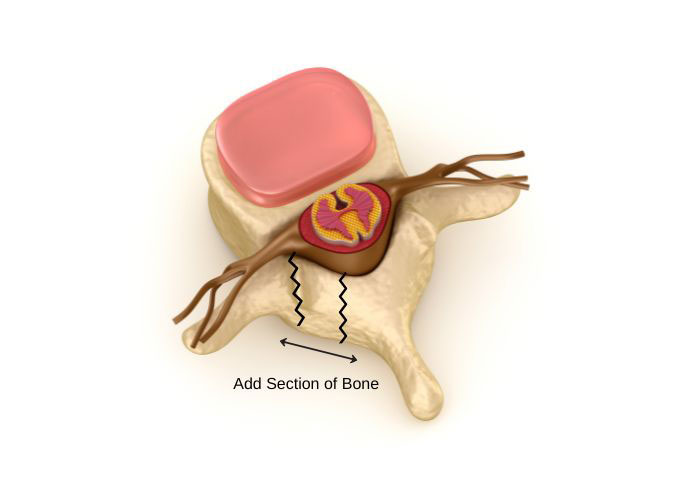Cervical Laminoplasty Surgeon
If you’re experiencing spinal cord or nerve root compression in your neck as a result of spinal stenosis and conservative treatments haven’t worked, it may be time to consider surgery to get your life back. Doctor Andre M. Samuel, orthopedic spine surgeon, treats patients in the Clear Lake, Houston, Sugar Land, TX area who need a posterior cervical laminoplasty to increase space in the spinal canal and reduce pain. Contact Dr. Samuel’s team today!

What is a posterior cervical laminoplasty?
A spinal surgeon often removes discs or bones in the spine to relieve pain and pressure on a nerve, but this is not always necessary. A posterior cervical laminoplasty is a procedure used to enlarge the spinal canal and reduce pressure on a compressed spinal cord, without performing a fusion and preserving natural neck motion. It’s typically used to treat conditions like cervical spinal stenosis, where the spinal canal narrows and compresses the spinal cord causing neck pain and difficulty with hand function and balance. Doctor Andre M. Samuel, orthopedic spine surgeon, treats patients in the Clear Lake, Houston, Sugar Land, TX area who may need a posterior cervical laminoplasty.

Why would I need a posterior cervical laminoplasty?
You might need a posterior cervical laminoplasty if you have symptoms caused by compression of the spinal cord or nerve roots in the cervical (neck) region. If conservative treatments like physical therapy fail, and the symptoms affect your quality of life, Dr. Samuel may recommend this procedure, which is used to treat conditions such as:
- Cervical Spinal Stenosis – Narrowing of the spinal canal in the neck, leading to pressure on the spinal cord and nerves.
- Myelopathy – Spinal cord dysfunction due to compression.
- Degenerative Disc Disease – As discs degenerate over time, they can lead to spinal canal narrowing and nerve compression.
- Ossification of the Posterior Longitudinal Ligament (OPLL) – A condition involving the abnormal calcification of a ligament in the spinal canal, which can compress the spinal cord.
It’s important to consult with an experienced spine surgeon, like Dr. Samuel, to determine if a posterior cervical laminoplasty is the best option for your condition.
How is a posterior cervical laminoplasty performed?
Once the patient is under general anesthesia and lying face down, Dr. Samuel makes a incision in the back (posterior) of the neck. He carefully moves muscles and ligaments aside and then cuts the lamina (the spinal bone) to create a hinge on one side. Dr. Samuel then scores the other side and opens the bone along the incomplete cut. A bone graft or metal plates and screws are added to secure the new opening, with each vertebra getting its own plate for mobility. Finally, everything is stitched back up with absorbable sutures.
As with any surgery, the pros and cons of a posterior cervical laminoplasty vary depending on the patient’s age and general health. Dr. Samuel and his team discuss the risks and benefits with each patient before the procedure.
How long does it take to recover from a posterior cervical laminoplasty?
After a posterior cervical laminoplasty, patients may spend a day or two in the hospital to manage pain. Walking is encouraged as soon as possible, even on the day of surgery, as it helps with balance and coordination. Pain management is crucial, but NSAIDs like Motrin are not allowed as they can interfere with the healing process. Patients may be fitted with a hard collar to help keep the neck bones in place and driving is off-limit for two weeks.
Most patients can return to desk jobs or household activities within 2-3 weeks after surgery, while a full recovery can take up to 12 weeks. Dr. Samuel and his team are only a phone call away and provide support throughout the process to ensure a successful outcome.



